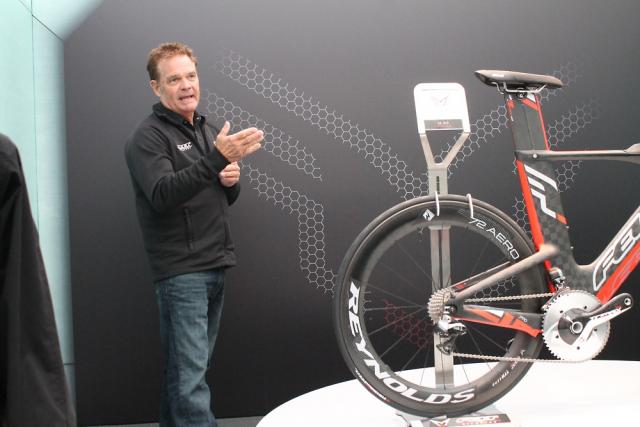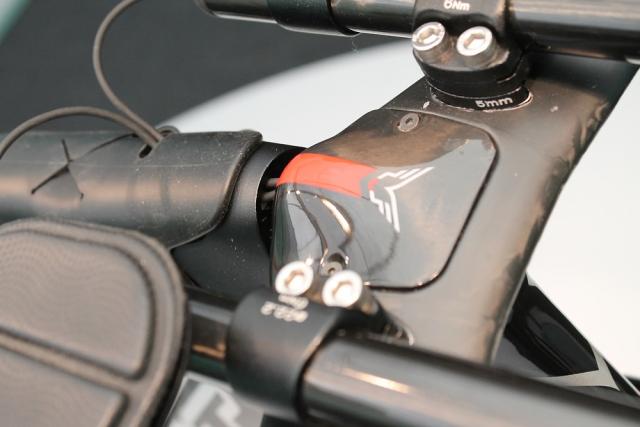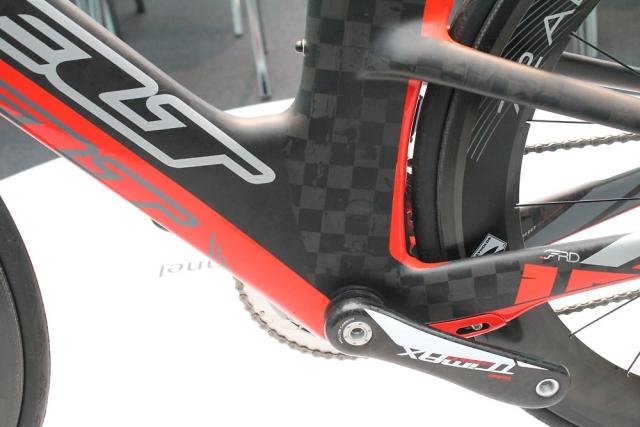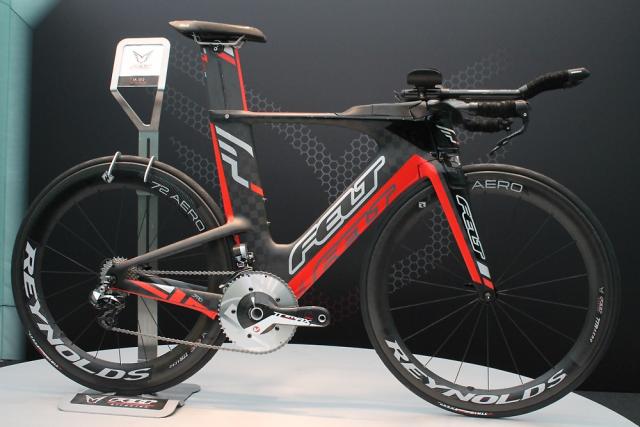- News
- Reviews
- Bikes
- Components
- Bar tape & grips
- Bottom brackets
- Brake & gear cables
- Brake & STI levers
- Brake pads & spares
- Brakes
- Cassettes & freewheels
- Chains
- Chainsets & chainrings
- Derailleurs - front
- Derailleurs - rear
- Forks
- Gear levers & shifters
- Groupsets
- Handlebars & extensions
- Headsets
- Hubs
- Inner tubes
- Pedals
- Quick releases & skewers
- Saddles
- Seatposts
- Stems
- Wheels
- Tyres
- Tubeless valves
- Accessories
- Accessories - misc
- Computer mounts
- Bags
- Bar ends
- Bike bags & cases
- Bottle cages
- Bottles
- Cameras
- Car racks
- Child seats
- Computers
- Glasses
- GPS units
- Helmets
- Lights - front
- Lights - rear
- Lights - sets
- Locks
- Mirrors
- Mudguards
- Racks
- Pumps & CO2 inflators
- Puncture kits
- Reflectives
- Smart watches
- Stands and racks
- Trailers
- Clothing
- Health, fitness and nutrition
- Tools and workshop
- Miscellaneous
- Buyers Guides
- Features
- Forum
- Recommends
- Podcast
TECH NEWS
Felt launch IA non-UCI time trial bike
Felt have released a completely new triathlon/non-UCI time trial bike in the IA that they claim to be comfortably the fastest ever bike of its kind. They say that the bike’s total drag is actually just a little more than that of a set of wheels.
The biggest reason for the aerodynamic efficiency of the IA, which stands for Integrated Aero, is that they’ve ignored the UCI’s rules which stipulate, for example, a maximum tube profile depth to width ratio of 3:1, and a maximum tube depth of 80mm. With a shrouded external steerer tube, the head tube area on the IA has a depth to width ratio that’s a colossal 11:1!

Having ditched the UCI’s rules, Felt have really cut loose here. Jim Felt, founder of Felt Bicycles, told UK Felt dealers this week that the company’s engineers worked on numerous tube shapes using CFD (computational fluid dynamics) and in the wind tunnel, with all the tube shapes optimized for the angle of the particular frame part.

Felt even got rid of the seatstays entirely at one stage during the development process in order to reduce the frontal area. The issue there, though, was that they had to make the chainstays so tall as a result that the bike lost lots of its overall aero performance at high yaw angles. That’s why, in the end, the IA has what Felt call Cloak Seatstays that meet the seat tube very low – something else that isn’t permitted by UCI rules – reducing the frontal area by nearly 50% compared to conventional seatstays.
Another benefit of mounting the seatstays so low, Felt say, is that it improves ride comfort by inducing a leaf-spring effect. The smaller rear triangle also increases lateral stiffness.

Felt use a similar Internaloc-clamped seatpost to the one found on their newly redesigned AR aero road bike but in a much deeper profile. It’s super-slim and the internal clamping mechanism makes for clean airflow around that area of the frame. The other benefit of their new clamping system, Felt say, is that it allows them to keep the walls of the seatpost very thin in order to provide shock absorption and a reduction in vibration.

Felt have even come up with a new braking system, developed concurrently with the frame. It’s a centre-pull design, a central slider moving up when you draw on the brake lever, moving the brake arms towards the wheel rim. It works with any levers and any wheels – the latter being particularly important as aero wheels have got wider recently and are likely to get wider still.

The front and rear brakes are the same design, the rear one being positioned behind the bottom bracket. Both are shrouded to reduce the drag… naturally!

All that gubbins towards the front of the top tube, behind the integrated stem, is what Felt call the AeroPac Cover. The cover is silicone and there’s a big hollow underneath there – the CalPac – that you can use for squirreling away your energy gels, Mars Bars, cheese (I don’t know what you take riding) and so on. Taping gels to the frame or even slinging them into your pockets can have a negative effect on aerodynamics, so this looks like a good use of that space. According to Jim Felt, there’s a possibility that Felt will look into using that space inside the frame for other storage purposes in the future.

As well as working out how to reduce drag as much as possible, Felt reckon they’ve worked hard to make airfoil sections that produce more lift that traditional airfoil shapes. Lift? In some airflow conditions, most tube sections of the IA will generate lift, like a sail, to counteract drag. At higher yaw angles (the apparent wind angle produced by the actual wind and the movement of the bike), the lift exceeds the drag so you get negative drag.
Surely, though, the IA must be a nightmare in a crosswind. When it blows from the flanks, with all that frame area you’re just going to topple over, or at least get blown right off course. Felt say not. They say that the IA is actually very stable in crosswinds… but we’ve not actually ridden this bike so we have no idea. It’s not heavy either. Made from TeXtreme carbon fibre, the IA’s frame weighs 1,220g.

So how slippery is the IA, exactly? For what it’s worth, Felt say that the complete bike has less than 350g of drag (although that really doesn’t mean a lot other than sounding impressive. And let’s not get into the rights and wrongs of using grams as a unit of measurement here).
In slightly more understandable terms, Felt say that wind tunnel testing shows that their sponsored triathlete Mirinda Carfrae will save more than 12:30mins over the Ironman Hawaii course in typical conditions by switching from her old Felt DA to the new IA. An Ironman bike leg is 112 miles, so she’ll be making an average saving of over a minute for every 10 miles, in theory.

The complete IA as shown, with a Shimano Dura Ace Di2 electronic groupset and Felt TTR1 wheels made by Reynolds, will set you back £7,999. It’ll also be available as a frame module. If you’re not in a market for a bike at that price, keep your fingers crossed that some of the technology will trickle down over future years.
For more info go to www.feltbicycles.com or www.saddleback.co.uk
Mat has been in cycling media since 1996, on titles including BikeRadar, Total Bike, Total Mountain Bike, What Mountain Bike and Mountain Biking UK, and he has been editor of 220 Triathlon and Cycling Plus. Mat has been road.cc technical editor for over a decade, testing bikes, fettling the latest kit, and trying out the most up-to-the-minute clothing. He has won his category in Ironman UK 70.3 and finished on the podium in both marathons he has run. Mat is a Cambridge graduate who did a post-grad in magazine journalism, and he is a winner of the Cycling Media Award for Specialist Online Writer. Now over 50, he's riding road and gravel bikes most days for fun and fitness rather than training for competitions.
Latest Comments
- mctrials23 51 min 36 sec ago
Flippin heck!
- quiff 1 hour 4 min ago
To be fair, from the absence of centre line it looks like the road might be too narrow for two vehicles to pass without encroaching on the cycle...
- Rendel Harris 1 hour 10 min ago
As a keen cyclist married to a keen cyclist I can testify that there isn't the slightest comparison. The worst unprovoked comments (i.e. when a row...
- Rendel Harris 2 hours 10 min ago
The UK population is currently a whisker over 69 million. The UK population in the 1901 census was 41 million. When exactly did you start cycling?
- hawkinspeter 2 hours 12 min ago
I think black boxes are great for early detection of cognitive decline and/or sight problems. Someone's driving is going to become much less smooth...
- Bigtwin 2 hours 28 min ago
Taxis doing what they want where they want when they want: unusual...
- Bigtwin 2 hours 47 min ago
It's a fashion. https://guildford-dragon.com/shalford-driver-who-smashed-shalford-war-me...
- MTL Biker 3 hours 8 min ago
Robin Phans .....
- Rendel Harris 4 hours 48 min ago
Well it would be irresponsible enough if there were only cars and buses, if there are going to be "cars, buses and traffic" that's just suicidal...















Add new comment
10 comments
Is it just me or is anyone else erked by this whole thing about aero wheels recently getting wider? Steve Hed must be pissed off, as HED have had the C2 (23.5mm) rim in production since 2006.
Not really, no, because they have got wider recently. Easton's new EC90 Aero 55: 28mm. Zipp 303 Firecrest: 26.45mm. Zipp 808 Firecrest: 26.4mm. Reynolds RZR 92: 28mm etc etc.
That was basically the point i was making. But i'm pretty sure i couldn't enter my local club TT on that Burrows recumbent.
What are the Ironman/ non UCI rules? Guessing they are restrictive on aero fairings?
Felt used figures from the Hotta/Lotus bike as a benchmark. They own one. They say it's very good on the track and in other situations when the yaw is close to zero, but not impressive at high yaw in real world conditions.
That bike is quite old now. Burrows hasn't been resting on his laurels since then and has made quite a few developments. One very neat one is integrated frame/aero chaincase.
And if you're ditching UCI rules then you can go a lot further. Think that felt, with added rider, would be more aero than say https://default.secure.media.ipcdigital.co.uk/11141/00000b11a/4359/Mike-... ?
This is a triathlon bike. Triathlon has plenty of equipment rules, they're just not the same as UCI rules. You can't ride a fully faired recumbent in a triathlon!
The best ones (including Mr Obree) are riding at Battle Mountain this week.
http://www.recumbents.com/wisil/whpsc2013/speedchallenge.htm
Of course they're HPVs & not bicycles.
Top speed so far (over 200m) is 76mph! (with Mr Obree at almost 50mph).
Yaw sure about dat?!
*cough*
To my mind the (using visual logic) fastest TT bike ever made. The Felt still looks heavily influenced by UCI rules. It's not completely unfettered (mmm, cheese) design. The Burrows is pre-UCI interference.